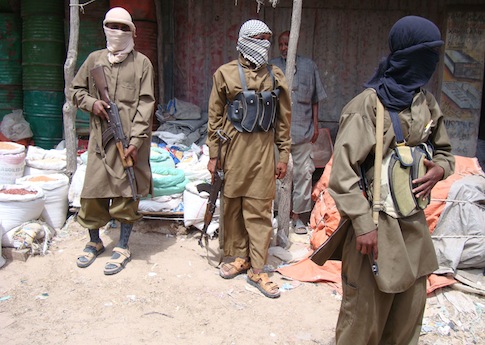Somali-American youth will remain vulnerable to recruitment by al Shabaab, the al Qaeda-affiliated group that perpetrated the attacks on the Westgate shopping mall in Nairobi, Kenya, last month, and pose a threat to national security absent a more effective U.S. strategy to prevent their radicalization, experts said Thursday.
The attacks on the mall in Nairobi by more than a dozen heavily armed members of the Somalia-based al Shabaab, reportedly including several Americans, killed more than 70 people and wounded more than 200.
More than 40 Americans from cities with large Somali immigrant populations such as Phoenix, Ariz. and Minneapolis, Minn. left to join al Shabaab between 2007 and 2010, either through the U.S.-Mexican border or by legally flying out of the United States, according to testimony before the House Foreign Affairs Committee by Seth Jones, associate director of the RAND Corp.’s International Security and Defense Policy Center.
Many become suicide bombers in Somalia because of their lack of direct clan ties to family members there, while others, like Kamal Said Hassan and Abdifatah Yusuf Isse from Minneapolis, have returned to the United States and have been convicted of providing material support to a terrorist group. Al Shabaab released a 40-minute video in August glorifying what it called its "Minnesota Martyrs," three men who the group said sacrificed their lives in the name of global jihad.
Don Borelli, chief operating officer of the Soufan group and a former counterterrorism agent for the Federal Bureau of Investigation (FBI), said many of the Americans are lured overseas by al Shabaab’s "nationalist agenda" of expelling "foreign invaders" from the Somali homeland.
However, new American recruits to al Shabaab can easily be co-opted into the global jihadist movement, Borelli said. He pointed to a similar scenario in 2009 when authorities foiled the New York subway attack plot by Najibullah Zazi, an Afghan-American who originally traveled back to his homeland to fight but was convinced by al Qaeda that he could be more effective back in the United States.
"Just because a young person might be enticed to join al Shabaab to defend his Somali homeland, this doesn’t mean he isn’t a threat to the U.S.," he said. "Our fear is that while Somalis here in the U.S. may travel to Somalia with a nationalist agenda and intend to stay and fight there, they could be converted into following the global agenda—the al Qaeda agenda—and return to the U.S. to launch attacks here."
The Westgate mall attack outside of Somalia’s borders suggests al Shabaab is increasingly advancing the cause of international jihad, testified Richard Downie, deputy director of the Africa Program for the Center for Strategic and International Studies.
Al Shabaab is led by Ahmed Godane, a veteran of jihadist campaigns in Afghanistan and the disputed Kashmir region who formally aligned with al Qaeda last year. Godane has moved to "consolidate" his power by exiling or killing dissidents who espoused a more nationalist agenda, Downie said.
"The two groups have been moving closer together, particularly since Godane became the leader," he said. "He has been trying constantly to reach out and appeal to al Qaeda."
While the witnesses recommended that the United States bolster its "light footprint" strategy of covert intelligence, law enforcement, and diplomatic assistance to the Somali government and its allies, they also urged government officials to develop a strategy for countering al Shabaab’s extremist ideology. Such a strategy has been nonexistent, they said.
"Why is it that we spend millions of dollars on counter terrorism and still American citizens are disappearing and fighting alongside with al Shabaab?" asked Mohamed Farah, executive director of Ka Joog, the largest Somali-American youth organization in the United States.
Farah said the majority of Somali-Americans denounce the radical Islamist ideology of al Shabaab. But youths who lack an education, a job, and a good mentor often fall prey to jihadist recruiters, he said.
"What happened over a week ago shows us that we need to do more work," he said. "Our federal government must invest in local entities to do work within the community."
Borelli said the federal government’s efforts to prevent radicalization in local Somali-American communities have been "disjointed and disconnected."
"A lot of responsibilities have been put on the back of law enforcement, and sometimes that might not be the best messenger," he said.
"They build a dialogue on Monday, and they’re doing arrests on Thursday. Sometimes there are opposing forces with different agendas within the same agency."
Jones noted that the United States has lacked a group with the explicit mission of countering extremist ideologies since the State Department disbanded the U.S. Information Agency in 1999.
Although some officials continue to view al Shabaab’s recent attacks as a regional threat, Borelli said they should be careful not to "make the same mistake with al Shabaab that we did with al Qaeda."
"In the early 1990s many smart people ignored al Qaeda because it was seen as a group only focused on the Middle East and Central Asia," he said.
"We have seen how a terrorist organization gone unchecked can morph into a global threat. We must not let that happen with al Shabaab."
